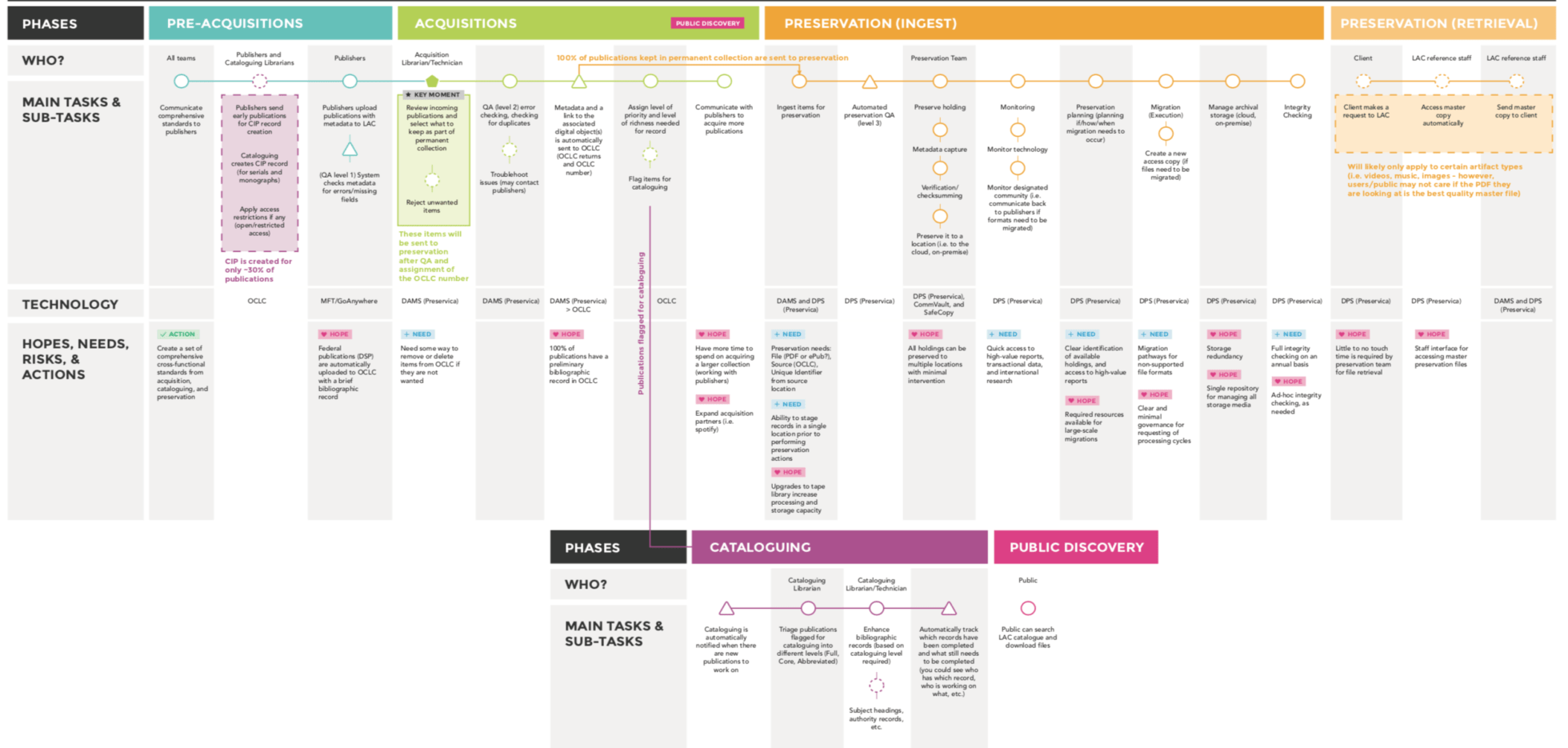About
Cultural heritage institutions, museums, and archives today are facing new challenges related to accessibility, digitization, and security. Ensuring that the public can easily access preserved materials and public records has never been more important––yet, many institutions require technical support and guidance to undertake this level of digital transformation and growth.
Outwitly worked with a national cultural heritage institution as they shifted towards using new digital tools and processes to properly and efficiently acquire and preserve heritage artifacts.

It was a real pleasure to work with Outwitly. They created an excellent report and there will be many positives to follow from this.
Senior Project Officer, Federal Government Office
The Challenge
Major gaps and inefficiencies in the current workflows for acquiring and preserving thousands of artifacts had created a multi-year backlog. As well, departmental silos, miscommunication, and a lack of cross-functional awareness within the organization had rendered it difficult to move forward with more innovative solutions for digital preservation.
The Goal
Reveal the current processes, pain points, and areas of opportunity to design an ideal and connected future workflow for digital acquisition and preservation. Align stakeholders within each department around these best practices and digital processes.
The Process
We used human-centered research to better understand and visually capture the different workflows in each department, including pain points, gaps, and areas for opportunity. We conducted a series of in-depth interviews (in-person and remotely) and contextual observations across departments at each step of the acquisition and preservation process. This research allowed us to understand the gaps in the current processes, and identify areas of inefficiency (e.g. disconnected manual or repetitive processes). The workflows were then represented through a set of current-state journey maps. To ensure our findings were accurate, we facilitated a series of co-design workshops with staff and stakeholders to validate and refine the journey maps.

We were then able to envision and collaboratively build a future-state journey through a final cross-departmental co-design workshop. The ideal future-state journey map reflected a connected workflow between all sections and addressed the major challenges felt in the work today.
The Research
15
In-Depth Interviews
with staff and stakeholders
1.5
Days of Observation
with librarians and technicians
12
Co-Design Participants
developed an ideal-future-state
Taking a more human approach to digital transformation revealed that beyond the technical limitations and workflow inefficiencies, there were many interpersonal challenges preventing a successful change to digital. Staff were worried about their jobs being replaced, teams were afraid they would be left in the dark as new tools and technologies were implemented, and animosity was building between departments who were seen to adopt more innovative versus traditional approaches to work. By allowing different departments to feel heard through the research, by providing a neutral and safe platform for them to openly discuss their hopes and fears, and by bringing them together in collaborative working sessions, we were able to generate excitement for a connected future state.
Our final Insights Report illuminated many of the employee culture and emotional aspects of change, as well as key performance indicators, tactical recommendations, and next steps that management could immediately implement to successfully manage the transformation.
The Impact
Throughout the process, our team provided strategic guidance for breaking down silos and empowering separate departments to more effectively communicate with each other. We also enabled upper management to better understand the needs of each employee group, and to develop constructive methods to enable positive change in office culture. Outcomes from the broader initiative will serve to: Significantly increase the number of digital items acquired and preserved each year; Create a streamlined and connected workflow for how digital items are acquired and preserved; Reduce processing time/touch time per digital item; and, Foster positive inter-departmental relationships, aligned around a common goal.
